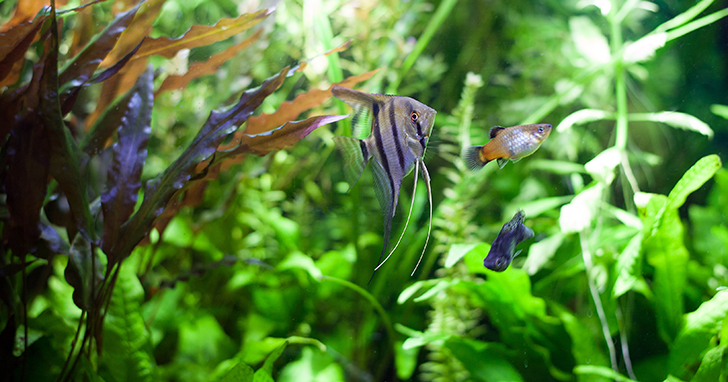
pH in Freshwater AquariumsWhy is understanding pH important for aquariums?
Many freshwater community fish thrive in a broad pH range between slightly acidic (6.5) to slightly alkalic (7.5). However, some fish, like sensitive discus or cichlids, require special water conditions. To provide their ideal water conditions, you must learn how to make adjustments to your aquarium water using pH conditioners. How do you test pH in aquariums?
Before using city or well water in your aquarium, test it to determine its pH and alkalinity (KH). In most areas, tap water falls within the 6.5-7.5 range. Tap water that tests high in pH is usually hard, or high in mineral content. To lower the pH, you cannot simply add acids using a commercial pH decreaser. The abundance of minerals in the tap water would buffer the acids. No effective pH change would be made. How do you adjust pH in aquarium water?
You first need to remove some of the minerals (or hardness) from your water. The best way to do this is with the use of a Reverse Osmosis unit. After you remove minerals, the use of peat or a commercial pH decreaser will be more effective at lowering pH to the desired level. The opposite is true if your tap water is acidic, or soft. You will first need to add minerals to buffer and raise the pH. Commercial alkaline buffers should do the trick to effectively raise and control pH at the desired level. What factors affect pH in aquariums?
Monitor pH frequently. Factors that affect pH can change - even in established aquariums or without the use of commercial water conditioners. The addition of acids can lower your aquarium pH, and these drops are very harmful to your fish. Acids come from several sources: from excess carbon dioxide via respiration, from the nitrification stage of biological filtration, and from leaching tannins in driftwood, to name a few. On the other hand, substrates or gravel containing coral, limestone, or seashells will leach carbonates into the water, which will raise the pH buffering capacity. In saltwater aquariums, this may be desirable, but in most freshwater aquariums, you generally don't want your substrate to raise pH levels. Are there signs when the pH in aquariums change?
Unfortunately, when your aquarium is experiencing pH imbalance, there are no visible signs. Since a small change in pH means a drastic change in alkalinity or acidity, it is important to monitor aquarium pH frequently. Keep a notepad to record your pH readings whenever you test. It will help you recognize patterns and find solutions when something is altering your pH. Before long, you'll be a pro at using pH conditioners to stabilize aquarium pH. Question :
Why is pH balance important? Answer :
Water that's either too alkalic or too acidic can wreak havoc on fish by interfering with their basic body functions, leaving them vulnerable to disease and stress. WE RECOMMEND:
Related Articles
|
|
|


